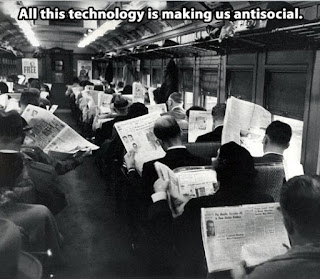"Not only are we just as human within the digital world, the digital also provides many new opportunities for anthropology to help us understand what it means to be human.”
With increase accessibility, more technological advances, and greater internet use, the field of anthropology is spreading to the digital sphere. Daniel Miller and Heather A. Horst wrote in their article, The Digital and the Human: A Prospectus for Digital Humanity, “The digital should and can be a highly effective means for reflecting upon what it means to be human, the ultimate task of anthropology as a discipline” (Horst, 22). The digital world is just as much a part of being human as the physical world. Miller and Horst present six principles for the foundation of digital anthropology in their article.
The first principle is the digital world intensifies what already exists, “the digital intensifies the dialectical nature of culture” (Horst, 22). Within this principle, the authors find it helpful to start with the definition of digital for the purpose of their book. They define digital in this context as, “everything that has been developed by, or can be reduced to, the binary- that is bits consisting of 0s and 1s” (Horst, 23). Everything in the digital world can be broken down to a single element, just as the monetary system in the physical world.
The second principle is that the information (or media) we receive has, throughout history, always been filtered before we receive it. Some claim the human race is more “mediated” than we ever were, but Miller and Horst argue that we are not “one iota more mediated by the rise of the digital” (Horst, 22). The concept of the book has been around hundreds of years, early humans have carved pictures in caves, and the Egyptians wrote their history on scrolls. We have had newspapers, radios, and televisions. Information has been filtered through people’s mouths since the beginning of time. Miller and Horst write, “online worlds are simply another arena, alongside offline worlds, for expressive practice, and there is no reason to privilege one over the other” (Horst, 27).
The third principle is of holism, “anthropologists focus upon life as lived and all the (mess of) relevant factors that comes with that” (Horst, 23). In lecture, we talked about human beings being social creatures. While some disciplines may study an individual alone and in solitude, anthropologists study human race in the natural, social environment. Miller and Horst argue, “that no one lives an entirely digital life and that no digital media or technology exists outside of networks that include analogue and other media technologies” (Horst, 29). The digital world and the physical world cannot exist without each other now and should be studied as a whole.
The fourth principle focuses on “cultural relativism” (Horst, 23), which is closely related to the fourth principle. Cultures are still very different, despite having digital access and the digital world is shaped by the dominant cultures. The authors argue, “Ignoring a global demography where most people actually live in rural India and China rather than in New York and Paris, the theoretical insights and developments emerging from this empirical base then reflect North American and Northern European imaginations about the word and, if perpetuated, become a form of cultural dominance” (Horst, 31).
The fifth principle is about openness and closure, “which emerge on matters ranging from politics and privacy to the authenticity of ambivalence” (Horst, 23). The authors mention William Debbel’s article, “A Rape in Cyberspace” where in a virtual world “Bungle” takes over other avatars and then “engaged in unspeakable sexual practices both with themselves and others” (Horst, 31). It makes the reader realize that the digital world is not so different, and not even safer, than the real world. It is a balancing act, just as the real world, between being too open and being too closed.
The sixth and final principle is that of the material world, the normalizing of the evolving technology and digital worlds. Miller and Horst write, “It is impossible to become human other than through socializing within a material world of cultural artefacts that include the order, agency, and relationships between things themselves and not just their relationship to persons. Artefacts do more than just express human intention” (Horst, 33). For me, I take this principle very literally. Materially, we all need some kind of device to enter into the digital world. A person will buy “artefacts” such as a computer, laptop, smartphone, etc. in order to connect themselves to a digital world. I think this principle shows, once again, that the real and digital world cannot exist today without the other.

No comments:
Post a Comment